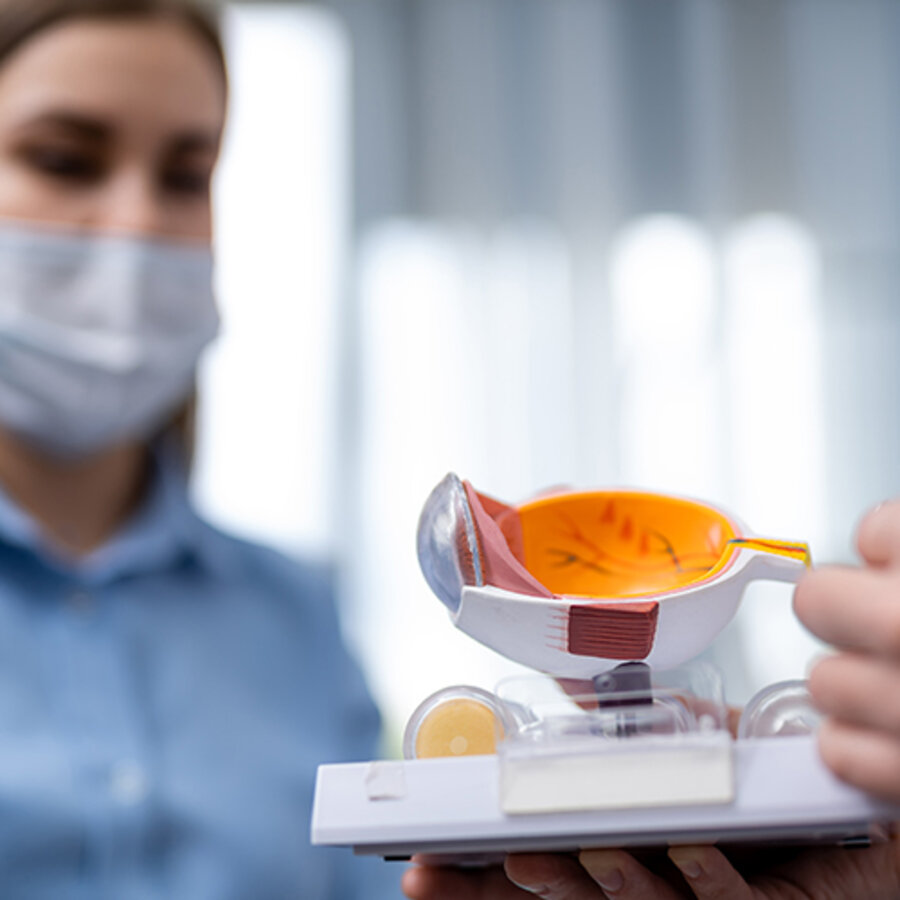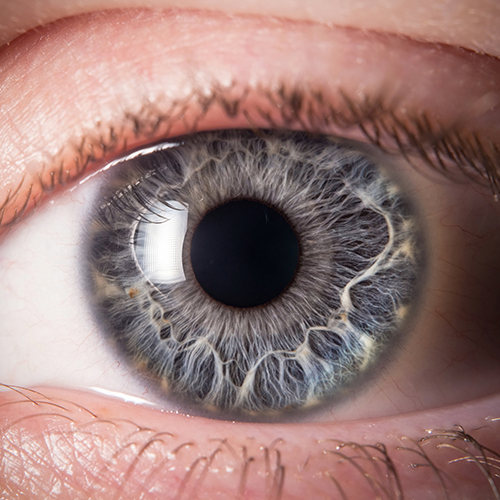During these two years of the coronavirus pandemic, we have learnt to recognise the symptoms of COVID-19: in most cases the disease manifests itself as fever, cough, sore throat, headache and loss of sense of smell.
Some infected patients present with gastrointestinal symptoms such as diarrhoea, abdominal pain, poor appetite and vomiting, while others show renal and ocular symptoms.
Most clinical research on the SARS-CoV-2 virus, which is responsible for COVID-19, has focused on respiratory manifestations, as it is the respiratory system that is most involved in infection. However, some studies have reported conjunctivitis as an early sign of COVID-19, and as the pandemic progressed, there was an increasing number of eye complications caused by SARS-CoV-2.
Ocular manifestations of COVID-19 are generally infrequent, occurring in one in 10 symptomatic patients. Although uncommon, knowing the frequency and type of ocular manifestations of COVID-19 can help doctors and patients recognise the infection earlier and better. Listed below are the ways and frequency in which COVID-19 manifests itself in the eye.



Most frequent ocular manifestations
- Dry eye or foreign body sensation: 16%
- Redness: 13%
- Tearing: 7-13%
- Itching: 13%
- Eye pain: 10%
- Ocular secretions: 5-9%
- Blurred or reduced vision: 8%
- Conjunctival hyperaemia (redness of one or both eyes on an inflammatory basis): 8%
- Photophobia (sensitivity to light): 7%
- Chemosis (conjunctival oedema, i.e. accumulation of fluid under the conjunctiva and protrusion of the conjunctiva): 5%
Rare ocular manifestations
Rarer ocular manifestations, reported in only 2% to 1% of symptomatic COVID-19 patients, include:
- Keratitis: inflammation of the cornea, the part of the eye in front of the pupil and the iris.
- Keratoconjunctivitis: simultaneous inflammation of the cornea and conjunctiva, the transparent membrane covering the “white of the eye”.
- Episcleritis: inflammation of the episclera, a thin layer between the conjunctiva and the sclera (i.e. the layers around the “white of the eye”).
- Stye: an inflammation at the base of the eyelashes that causes a kind of yellowish-white pimple to form.
- Pinguecula: an abnormal, benign growth of yellowish tissue in the conjunctiva.
- Posterior ischaemic optic neuropathy: infarction of the optic nerve head, i.e. a condition in which optic nerve cells die as a result of a lack of blood supply.
Ocular manifestations in severe cases
Cases of chemosis and conjunctival hyperaemia have been reported in patients in intensive care due to COVID-19.
Haemorrhages, abnormalities and retinal vascular lesions have been observed in intubated patients and appear to be associated with the severity of COVID-19.
In general, patients with more severe forms of COVID-19 have been found to have an approximately three-fold increased risk of developing ocular manifestations of the disease compared to milder cases.
Why does COVID-19 manifest in the eye?
The reason for the ocular manifestations in patients with COVID-19 seems to be related to the presence of the ACE2 receptor in the cornea, retina and conjunctiva. This receptor allows coronaviruses, including SARS-CoV-2, to enter our cells and could promote virus entry and disease development in eye tissues.
The importance of recognising ocular manifestations
Although the incidence rate of ocular manifestations is generally low in patients with COVID-19, early recognition of any signs and symptoms in the eye can be helpful in identifying potentially infected patients. Although ocular manifestations are less common than respiratory symptoms, they can occur as initial and unique symptoms of infection.
The link between the pandemic and dry eye disease
The mechanism leading to dry eye or foreign body sensation is unclear in patients with COVID-19 and may not be directly associated with SARS-CoV-2 infection.
The occurrence of dry eye disease during the pandemic could be linked to the use of face masks and the resulting diversion of exhaled air to the eyes, especially when the masks are loose. The flow of air against the ocular surface causes accelerated evaporation of tear fluid, thus causing dry eye symptoms. In people with pre-existing dry eye or an altered tear film, symptoms may be more common and prominent.
In addition, since the start of the pandemic, people are spending much more time in front of electronic devices, which can exacerbate the dry eye sensation.
How can the risk of Covid-19 infection be reduced?
In the search for agents capable of combating the new coronavirus, the natural molecule of hypochlorous acid (HOCl) emerged, whose virucidal and bactericidal properties were well known in the literature. Several studies have confirmed its effectiveness and rapidity of action against SARS-CoV-2 as well. Today, thanks to technological innovation, it is possible to have a stable, pH-neutral and well-tolerated hypochlorous acid solution, to the extent that it can be used as a spray not only on the eye area, but also nebulised over the whole face before putting on the mask.







How do you rate your experience on our site?
Comments
You need to log in to post a comment
No comments inserted